Achieving abs of steel isn't just about aesthetics; it's also about building a strong core that supports overall physical health. The trunk, which includes the muscles around the abdomen, lower back, and pelvis, plays a crucial role in almost every movement we make. Incorporating trunk exercises into your fitness routine can improve your posture, enhance your performance in various sports, and reduce the risk of injuries. Here's a comprehensive guide on effective trunk exercises for both men and women.
Understanding the Trunk
The trunk, often referred to as the core, forms the foundation for nearly all movements. A well-conditioned trunk not only contributes to athletic performance but also supports daily activities, reduces the risk of injury, and enhances posture.
The trunk muscles include:
- Rectus Abdominis (six-pack muscle):
Vital for flexing the lumbar spine and maintaining overall core stability.
- Transverse Abdominis:
The deepest layer of abdominal muscle, which stabilizes the spine and pelvis.
- Internal and External Obliques:
Located along the sides of the abdomen, these muscles assist with twisting and bending movements.
- Erector Spinae:
A group of muscles responsible for extending and supporting the spine.
- Multifidus:
Small, yet crucial muscles for stabilizing the spine.
A balanced workout targeting each of these muscles is essential for developing core strength, stability, and mobility.
Benefits of Trunk Exercises
Developing trunk strength offers a myriad of benefits that go beyond just aesthetics. By training the trunk:
- Improved Posture:
A strong core helps maintain spinal alignment, reducing slouching and back pain.
- Enhanced Balance and Stability:
Core muscles support the entire body, improving balance during both athletic and everyday activities.
- Better Athletic Performance:
Core strength is key in sports, boosting overall performance by allowing for more powerful, controlled movements.
- Injury Prevention:
Strengthening the trunk, especially the lower back, helps protect against injuries, including muscle strains and lower back pain.
Comprehensive Trunk Exercises for All Levels
Here’s a breakdown of effective trunk exercises, organized by difficulty level to ensure inclusivity for beginners, intermediate, and advanced trainees.
Beginner Trunk Exercises
1. Plank
- This static hold works the rectus abdominis, transverse abdominis, and back muscles.
- Tip: Keep your hips aligned with the shoulders to avoid unnecessary strain on the lower back.
- Tip: Keep your hips aligned with the shoulders to avoid unnecessary strain on the lower back.
2. Bird-Dog
- Focuses on stability by engaging the lower back and transverse abdominis.
- Progression: Add a dumbbell or ankle weights for increased resistance.
- Progression: Add a dumbbell or ankle weights for increased resistance.
3. Side Plank
- A great introduction to working the obliques. Add leg lifts to engage the hips.
Intermediate Trunk Exercises
4. Russian Twists
- Targets the obliques while incorporating rotational movements.
- Tip: Keep the motion controlled to avoid straining the lower back.
- Tip: Keep the motion controlled to avoid straining the lower back.
5. Leg Raises
- Emphasizes the lower rectus abdominis. Keep the lower back flat on the floor to maximize the effectiveness and avoid injury.
6. Bicycle Crunches
- Activates the entire core, especially the obliques and rectus abdominis.
- Form Tip: Keep your shoulders off the floor for the entire movement.
- Form Tip: Keep your shoulders off the floor for the entire movement.
7. Medicine Ball Slams
- Engages the entire core with dynamic explosive movements, ideal for functional strength.
Advanced Trunk Exercises
8. Ab Rollouts
- Intense core engagement, particularly for the transverse abdominis.
- Variation: Use a stability ball if an ab wheel is too difficult initially.
- Variation: Use a stability ball if an ab wheel is too difficult initially.
9. Hanging Leg Raises
- Requires strength from the rectus abdominis and hip flexors.
- Form Tip: Maintain a slow, controlled motion to maximize tension.
- Form Tip: Maintain a slow, controlled motion to maximize tension.
10. Windshield Wipers
- Builds rotational strength, focusing on the obliques and stabilizers.
Functional Trunk Exercises
Functional movements that replicate everyday activities help improve overall trunk function and endurance. These exercises are particularly useful for athletes or individuals who want to build functional strength.
11. Farmers Walk
- Develops overall stability as you engage your core to balance heavy weights.
12. Kettlebell Swings
- Engages the posterior chain and core, improving both power and endurance.
Integrating Trunk Exercises into Your Workout
Trunk exercises can be incorporated into various workout formats, including strength training, cardio, and flexibility routines. Here are a few sample routines:
HIIT Routine (Combine trunk exercises with high-intensity cardio)
- 30 seconds of mountain climbers
- 30 seconds of rest
- 30 seconds of plank jacks
- 30 seconds of rest
- Repeat for 4 rounds
Strength Training
- Superset leg exercises like squats with plank holds or ab rollouts for a full-body workout.
- Aim for 3 sets of 10-12 repetitions for each core exercise.
- Aim for 3 sets of 10-12 repetitions for each core exercise.
Recovery and Stretching
Recovery is essential to prevent overuse injuries and ensure long-term gains. Trunk muscles can easily become stiff, particularly in the lower back. Incorporate the following stretches:
- Cat-Cow Stretch:
A dynamic movement that promotes spinal mobility.
- Child’s Pose:
Helps stretch the lower back and relax the trunk.
- Thread the Needle:
Improves mobility in the upper back and shoulders.
- Hip Flexor Stretch:
Critical for releasing tension in muscles that affect core stability.
Nutrition and Core Development
A well-rounded diet supports core muscle growth and recovery. Focus on lean proteins, healthy fats, and complex carbs to fuel your workouts. Adequate hydration and sleep are equally important to optimize performance and prevent fatigue.
Conclusion
Building a strong trunk is key to overall fitness, enhancing not just appearance but also functional strength, performance, and injury prevention. Incorporate a variety of exercises, stay consistent, and prioritize recovery to unlock the full potential of your core.










0 Comments